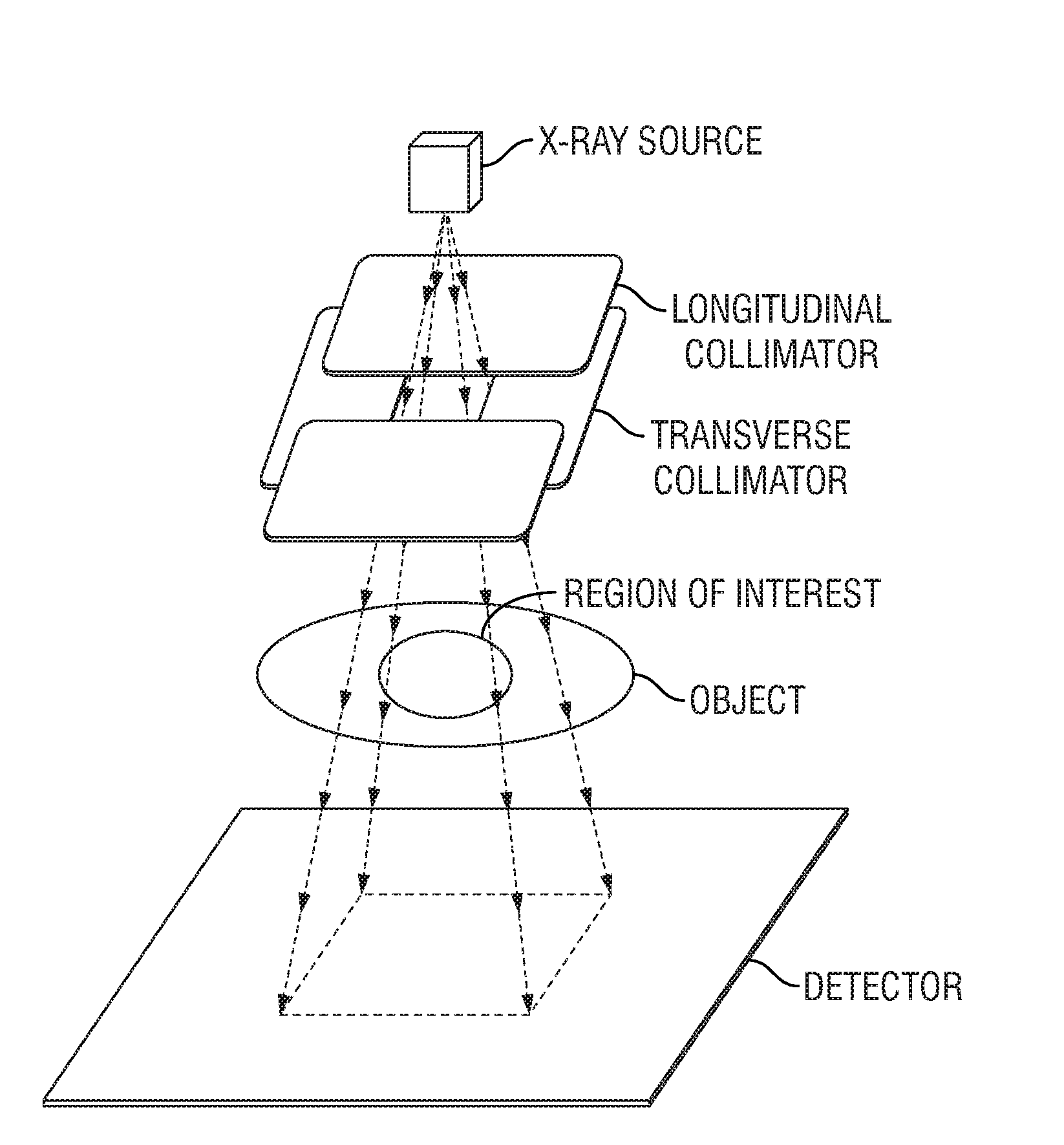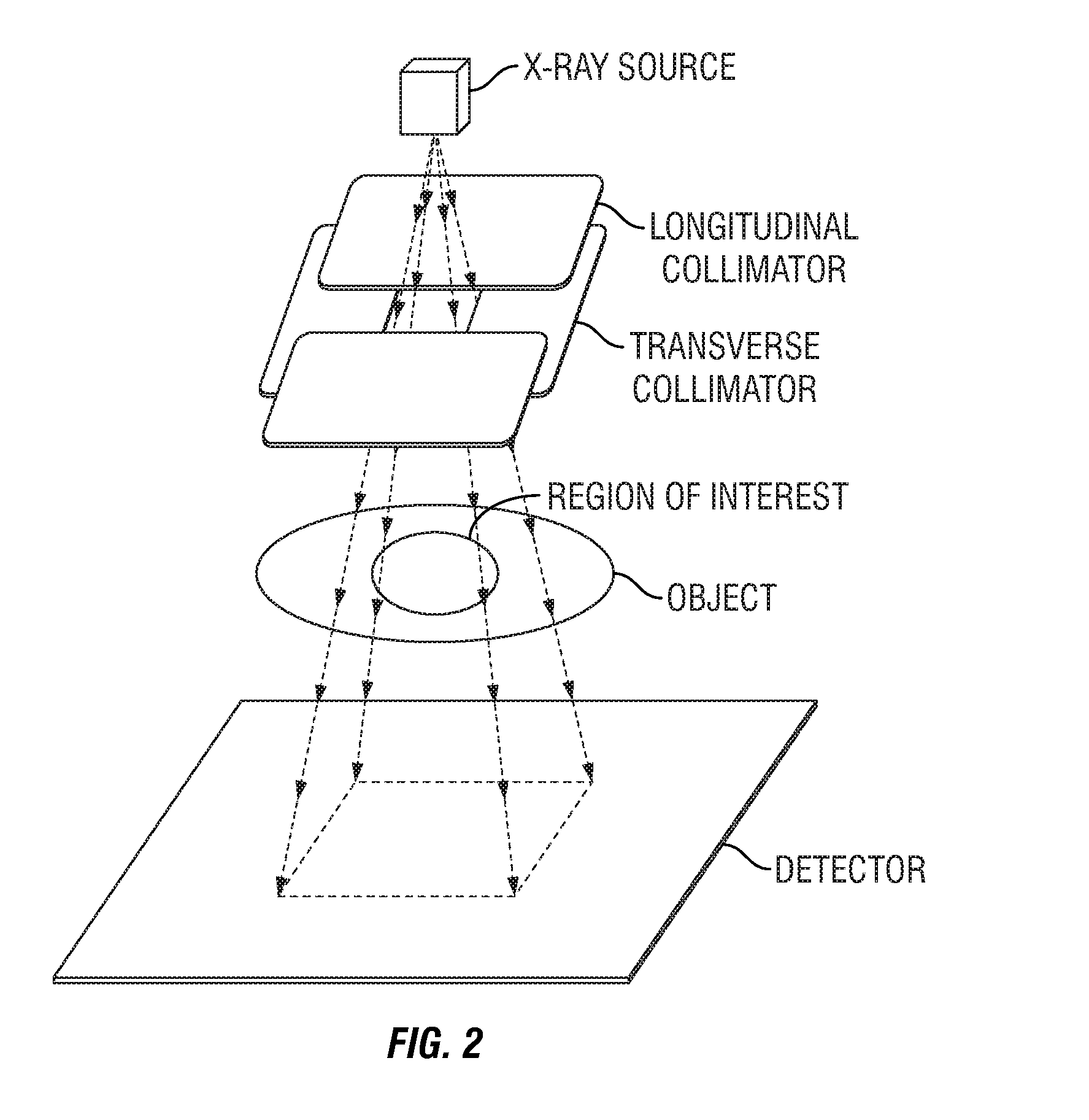Intensity-modulated, cone-beam computed tomographic imaging system, methods, and apparatus
a computed tomography and intensity modulation technology, applied in the field of computed tomography, can solve the problems of increasing the risk of cancer, not being implemented, and not being able to shape the window of exposure, so as to reduce the overall radiation exposure
- Summary
- Abstract
- Description
- Claims
- Application Information
AI Technical Summary
Benefits of technology
Problems solved by technology
Method used
Image
Examples
example 1
Region of Interest Reconstruction and Dose Reduction Estimation in Collimated CBCT Imaging
[0057]When objects or bodies extend outside scan FOV, there is abrupt discontinuity at the edges of detector, and projection data is truncated since missing data outside the detector is theoretically assumed to be zero during CBCT reconstruction. In practice, nearly all of the reconstruction algorithms in CBCT scanners are based on the FDK algorithm. Performing one-dimensional (1-D) filtering on truncated projection data leads to bright band artifacts extending inside scan FOV and incorrect reconstruction around the edges of scan FOV7. FIG. 1A shows an example of region of interest (ROI) imaging with mild truncation on projection data commonly encountered due to limitation of detector size. The object is entirely visible at several views, but truncation occurs at the other views. Several analytical reconstruction algorithms8,9 in the backprojection-filtration (BPF) family can exactly reconstruc...
PUM
 Login to View More
Login to View More Abstract
Description
Claims
Application Information
 Login to View More
Login to View More - R&D
- Intellectual Property
- Life Sciences
- Materials
- Tech Scout
- Unparalleled Data Quality
- Higher Quality Content
- 60% Fewer Hallucinations
Browse by: Latest US Patents, China's latest patents, Technical Efficacy Thesaurus, Application Domain, Technology Topic, Popular Technical Reports.
© 2025 PatSnap. All rights reserved.Legal|Privacy policy|Modern Slavery Act Transparency Statement|Sitemap|About US| Contact US: help@patsnap.com



